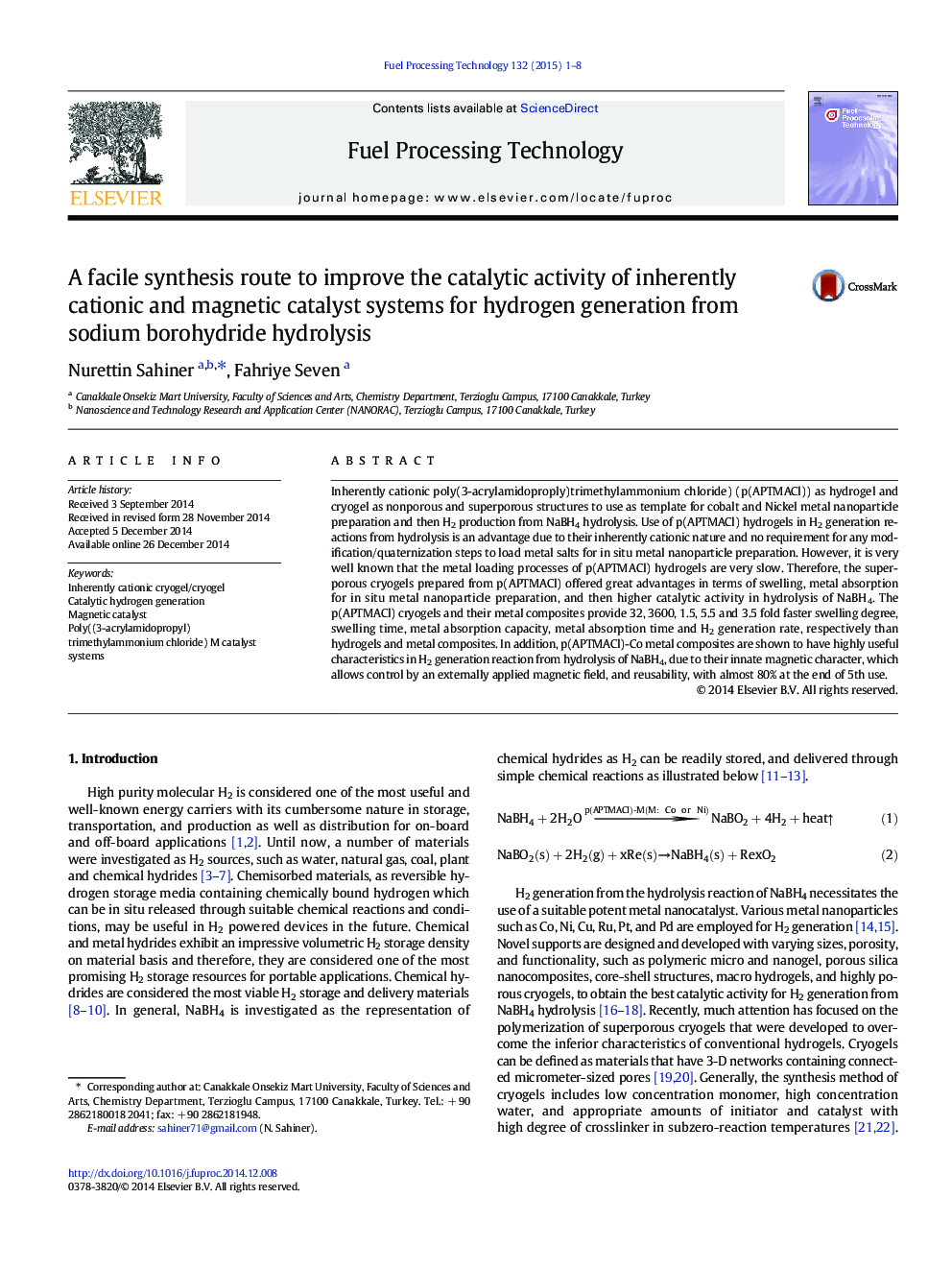| Article ID | Journal | Published Year | Pages | File Type |
|---|---|---|---|---|
| 209585 | Fuel Processing Technology | 2015 | 8 Pages |
•Cationic p(APTMACl) cryogels as templates for metal nanoparticle preparation•P(APTMACl)-M (M: Co, Ni) cryogel catalysts for H2 production from NaBH4 hydrolysis•Innate magnetic field responsive p(APTMACl)-Co catalyst to control H2 generation
Inherently cationic poly(3-acrylamidoproply)trimethylammonium chloride) (p(APTMACl)) as hydrogel and cryogel as nonporous and superporous structures to use as template for cobalt and Nickel metal nanoparticle preparation and then H2 production from NaBH4 hydrolysis. Use of p(APTMACl) hydrogels in H2 generation reactions from hydrolysis is an advantage due to their inherently cationic nature and no requirement for any modification/quaternization steps to load metal salts for in situ metal nanoparticle preparation. However, it is very well known that the metal loading processes of p(APTMACl) hydrogels are very slow. Therefore, the super-porous cryogels prepared from p(APTMACl) offered great advantages in terms of swelling, metal absorption for in situ metal nanoparticle preparation, and then higher catalytic activity in hydrolysis of NaBH4. The p(APTMACl) cryogels and their metal composites provide 32, 3600, 1.5, 5.5 and 3.5 fold faster swelling degree, swelling time, metal absorption capacity, metal absorption time and H2 generation rate, respectively than hydrogels and metal composites. In addition, p(APTMACl)-Co metal composites are shown to have highly useful characteristics in H2 generation reaction from hydrolysis of NaBH4, due to their innate magnetic character, which allows control by an externally applied magnetic field, and reusability, with almost 80% at the end of 5th use.
Graphical abstractFigure optionsDownload full-size imageDownload as PowerPoint slide
